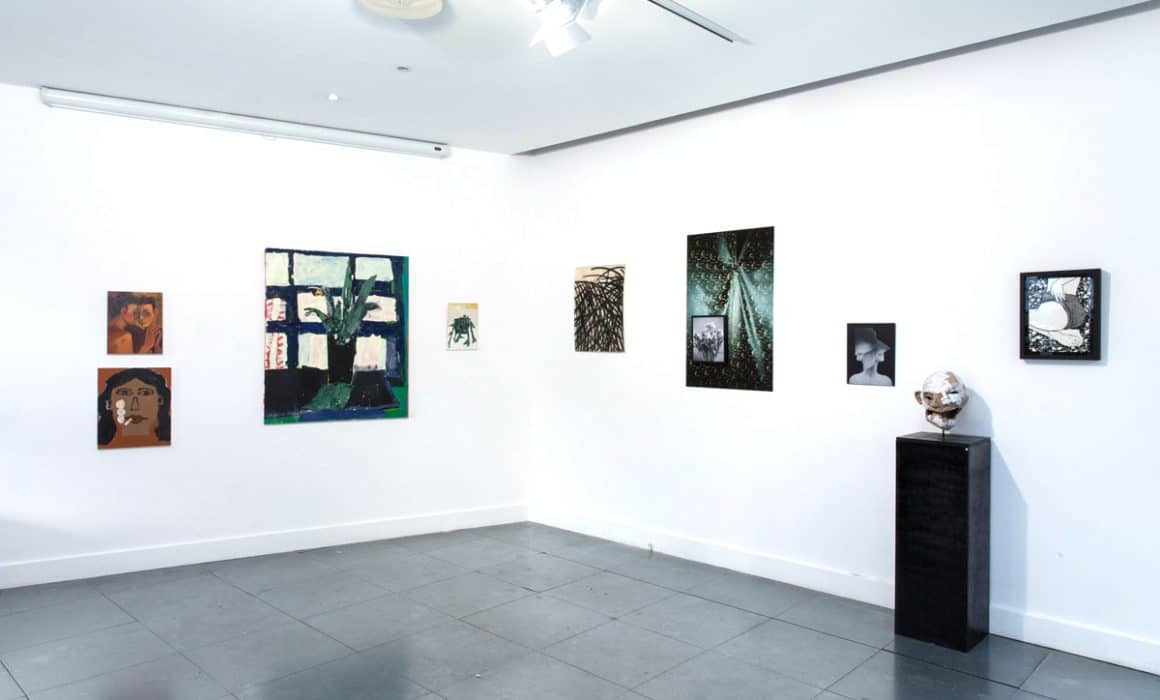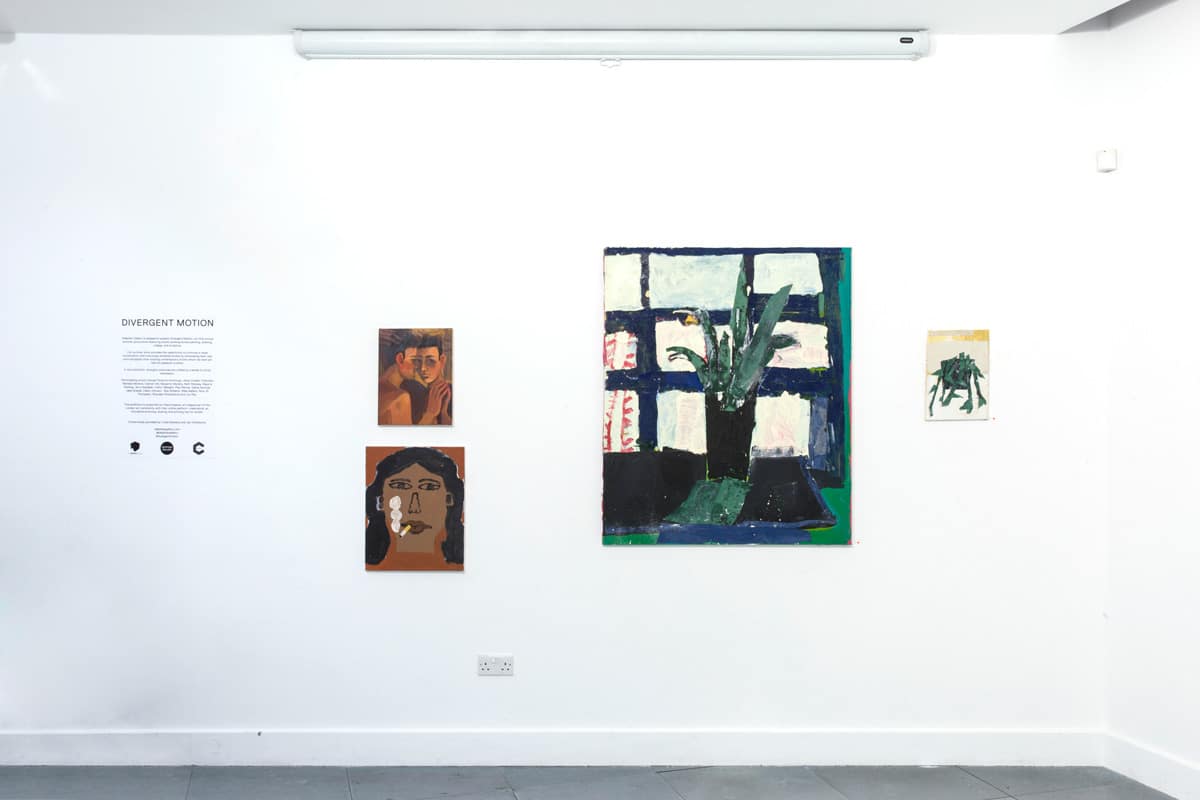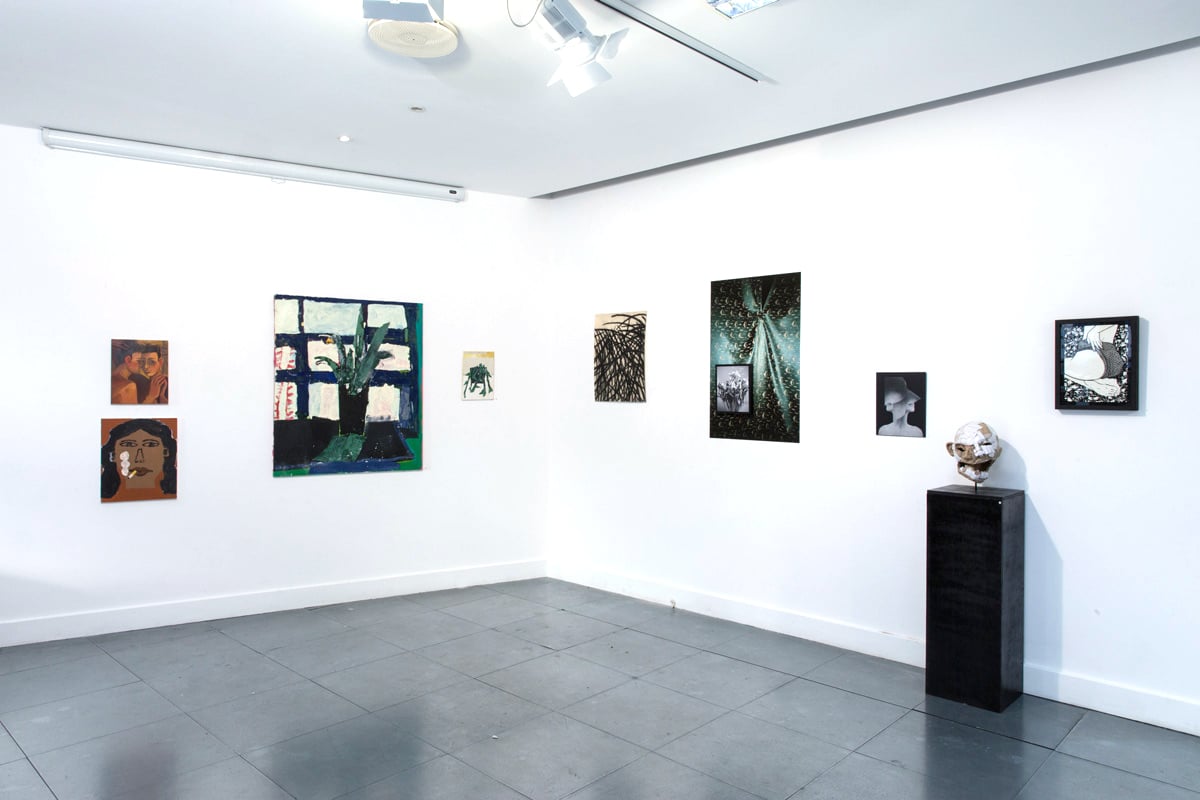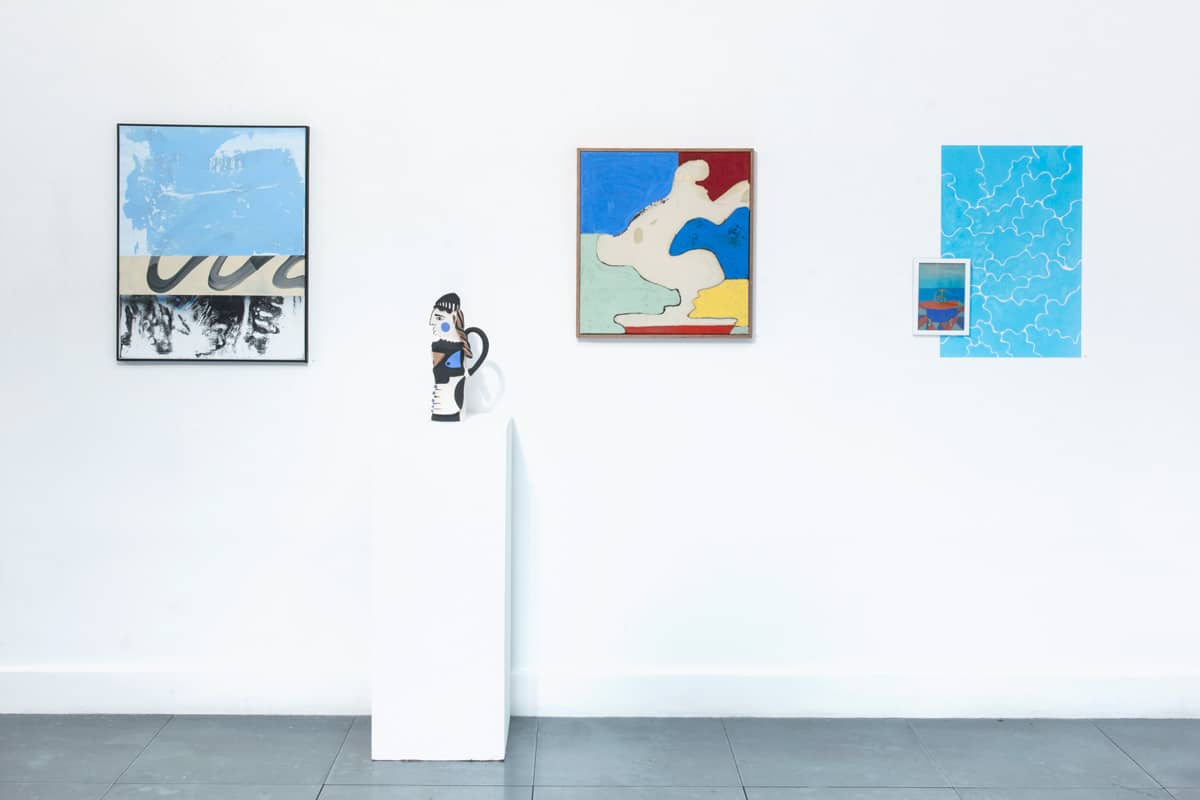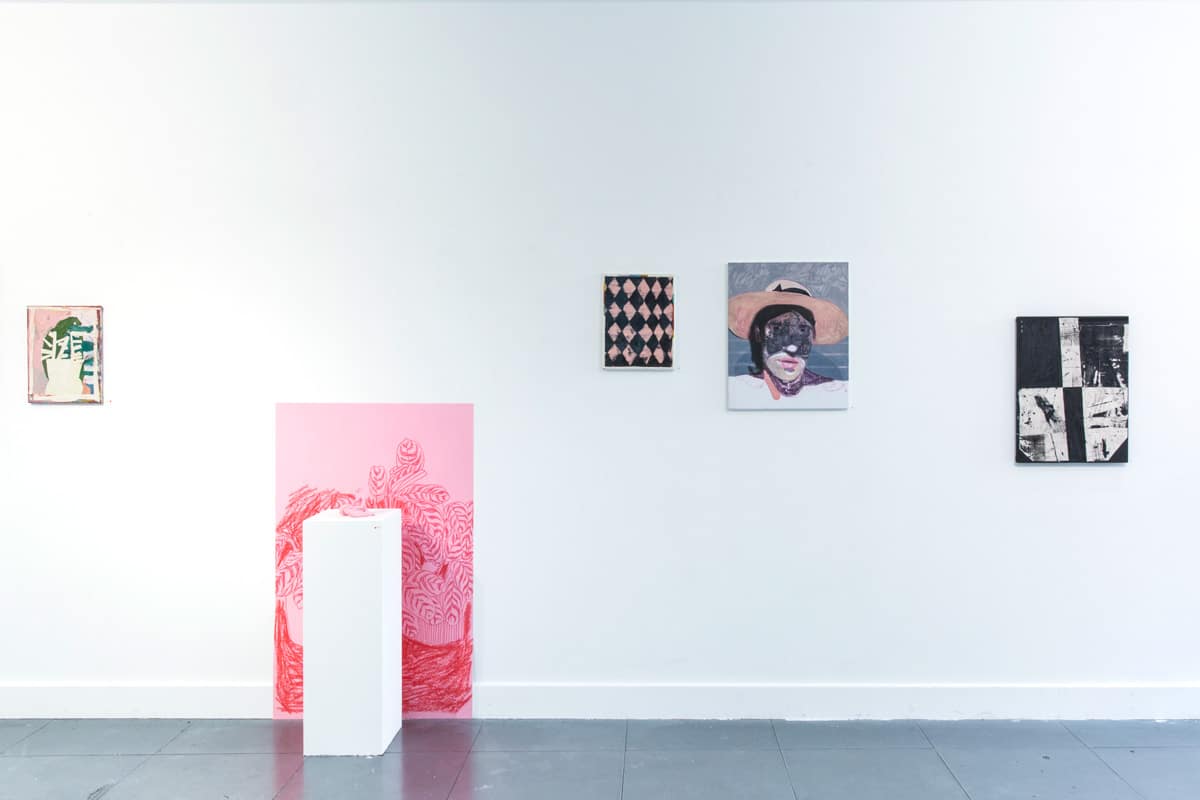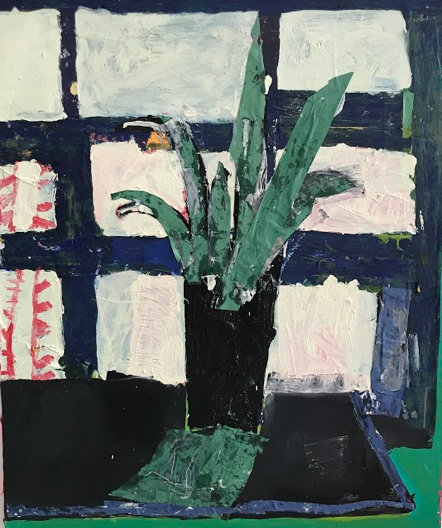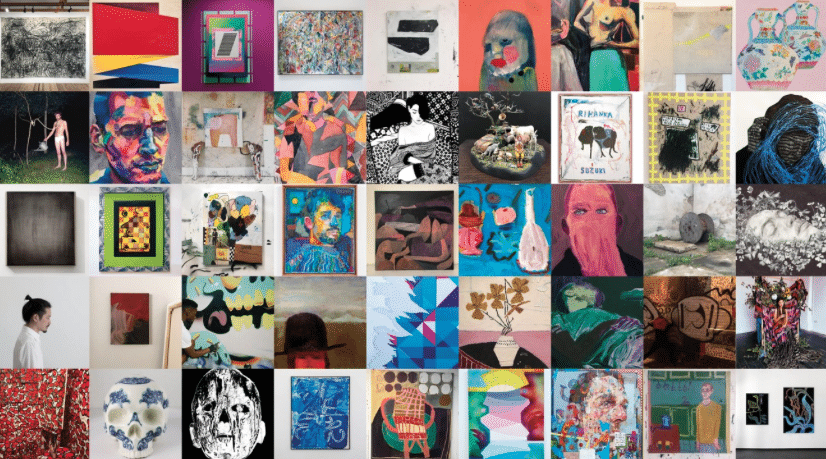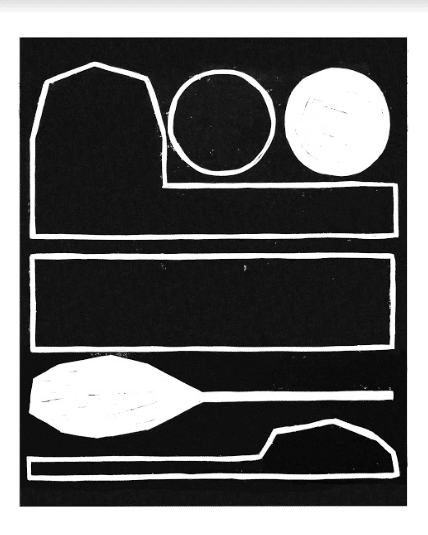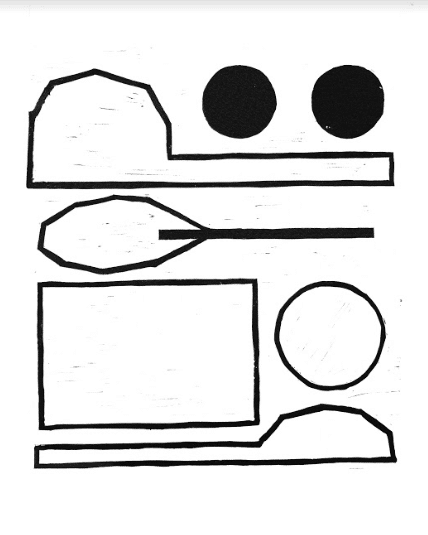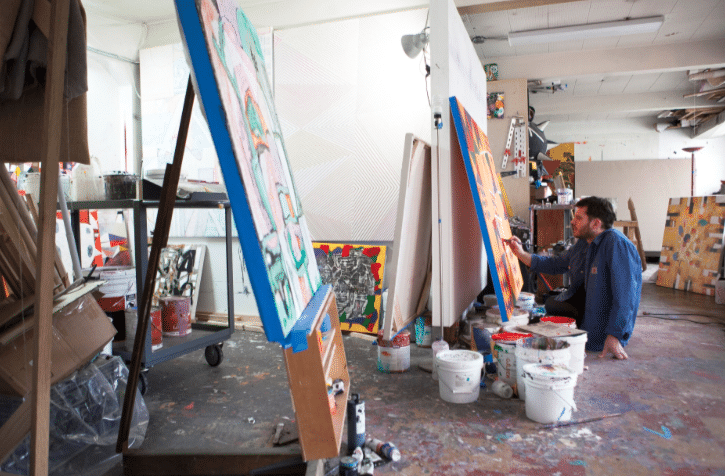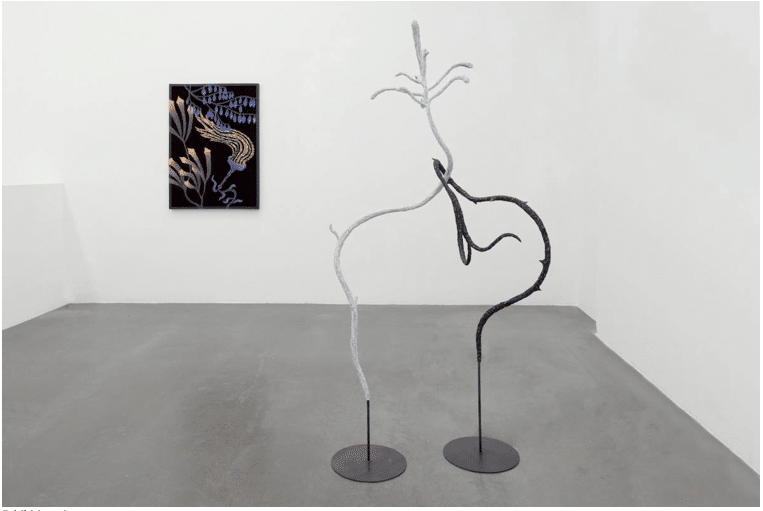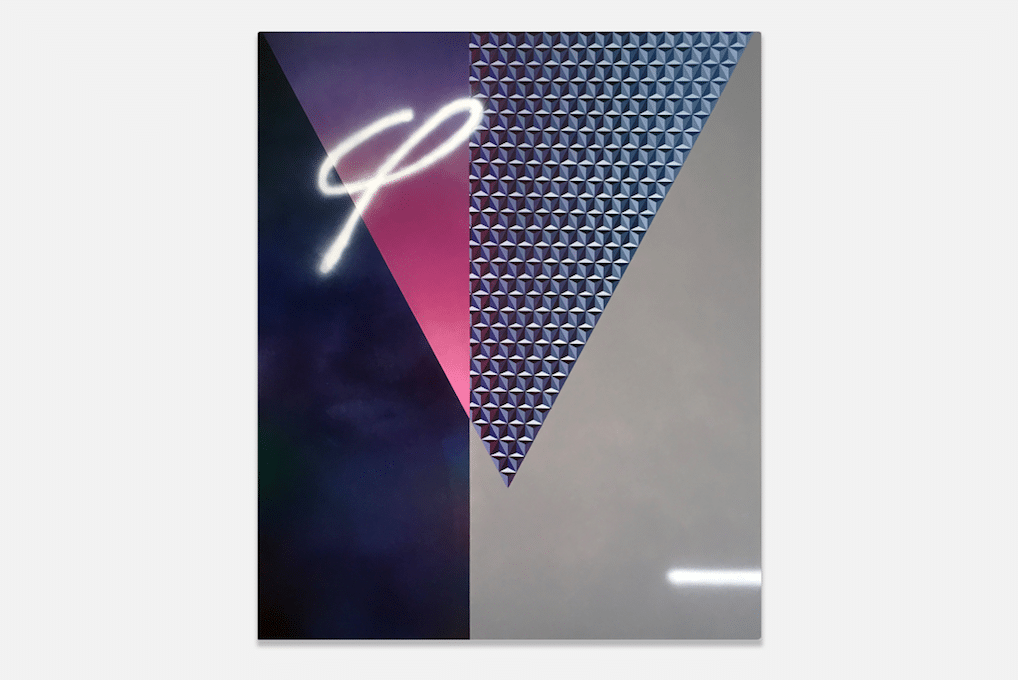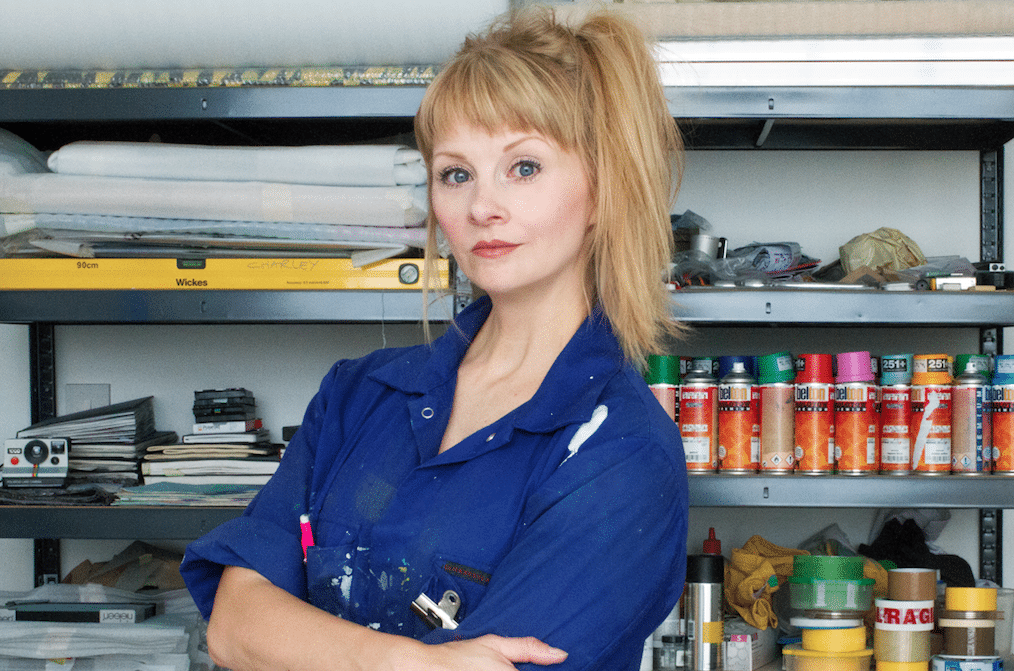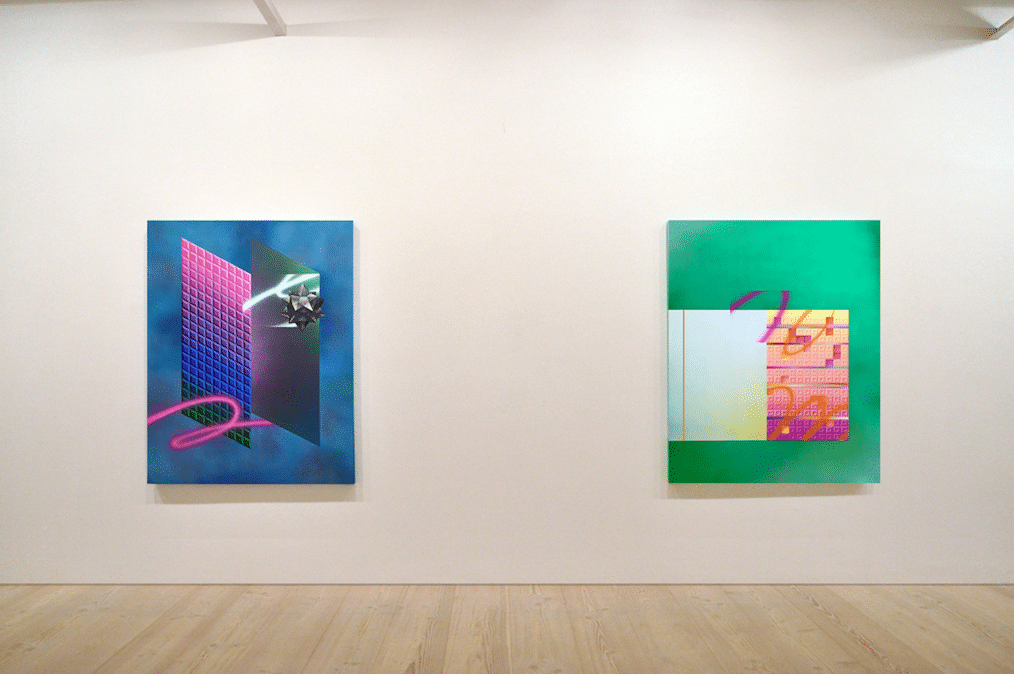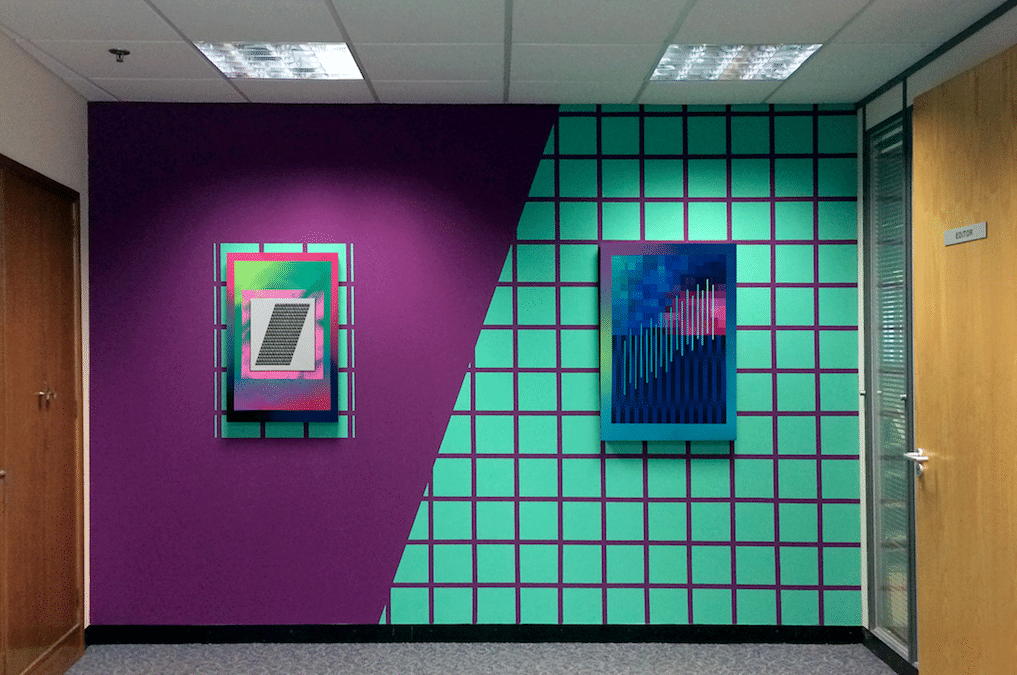Trying not to Breathe – Benjamin Murphy and Taylor A White
Taylor White is an artist who’s paintings are a visual record of his violently-unique character. Sitting somewhere in between gestural abstraction and hard-edged formalism (with the odd bit of representation), his works are an overload of perfectly-ordered chaos. His online persona feeds into this entropic aura that surrounds his works, and it is impossible not to see the joy he has both in his work and life. I decided to have a little chat with him about his work, because scrolling through his Instagram was such an entertaining, and inspiring experience, that I couldn’t help but try to find out more.
The statement that he has about his work on his website is a perfect example of what I have tried to elucidate above, and for this reason I have decided to include it verbatim.
My work gives form to fleeting memories and the dormant mania crawling beneath the carpet of the western home. These images recount crisis and triumph, momentum and confinement, lust and low-altitude bombing. Finding stillness in the recording of arguments within the process of painting and drawing, I return to my childhood freezer filled with popsicles and secret passageways.
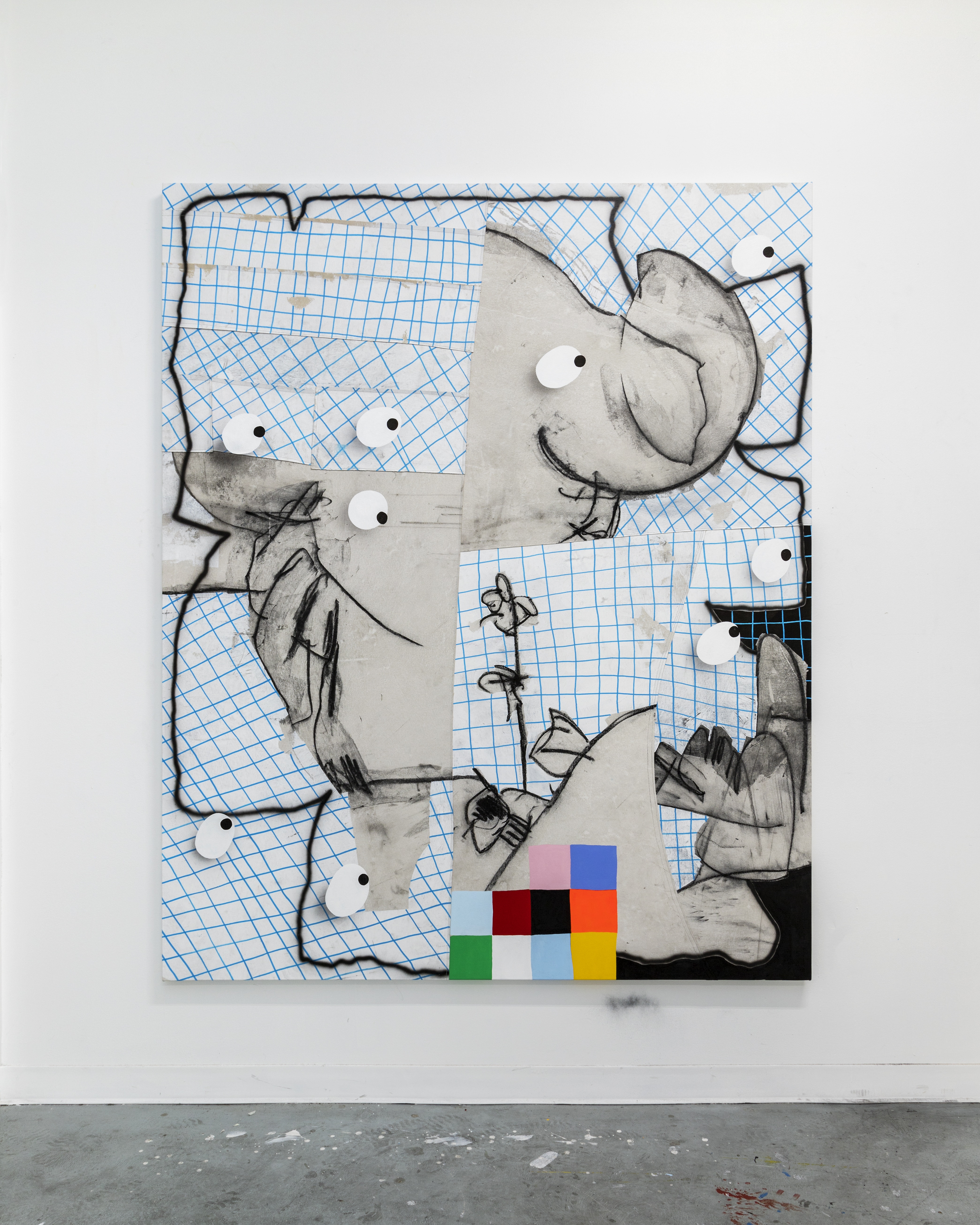
Fake Zoo

Taylor A White in his studio
 BM – What is your work about?
TAW – I don’t ever intentionally make work about a specific subject, or try to direct viewers to see it in a certain way. Often I can overhear a segment of a conversation or something like that, and it sort of becomes a point of departure in a painting. I’m always interested in letting the work completely become unhinged from that initial prompt, and I never feel any obligation to circle back and force it to make sense, to resolve it
BM – So how does it make you feel when you look at it afterwards, and are there any signifiers within the work that you can identify as being related to certain things?
TAW – I generally don’t let a painting survive if it makes sense, I find it boring.
Sometimes symbols and shapes that I draw are interpreted as specific signifiers for something, but they’re most often based on my immediate interest in drawing them.
Sometimes that can result in something that maybe points to things happening in the subconscious l, but I’m comfortable with letting people interpret it however they’d like.
I also had a great teacher that once told me “you’re saying more than you might think”.
So I just kept going, firing from instinct and impulse.
BM – What is your work about?
TAW – I don’t ever intentionally make work about a specific subject, or try to direct viewers to see it in a certain way. Often I can overhear a segment of a conversation or something like that, and it sort of becomes a point of departure in a painting. I’m always interested in letting the work completely become unhinged from that initial prompt, and I never feel any obligation to circle back and force it to make sense, to resolve it
BM – So how does it make you feel when you look at it afterwards, and are there any signifiers within the work that you can identify as being related to certain things?
TAW – I generally don’t let a painting survive if it makes sense, I find it boring.
Sometimes symbols and shapes that I draw are interpreted as specific signifiers for something, but they’re most often based on my immediate interest in drawing them.
Sometimes that can result in something that maybe points to things happening in the subconscious l, but I’m comfortable with letting people interpret it however they’d like.
I also had a great teacher that once told me “you’re saying more than you might think”.
So I just kept going, firing from instinct and impulse.
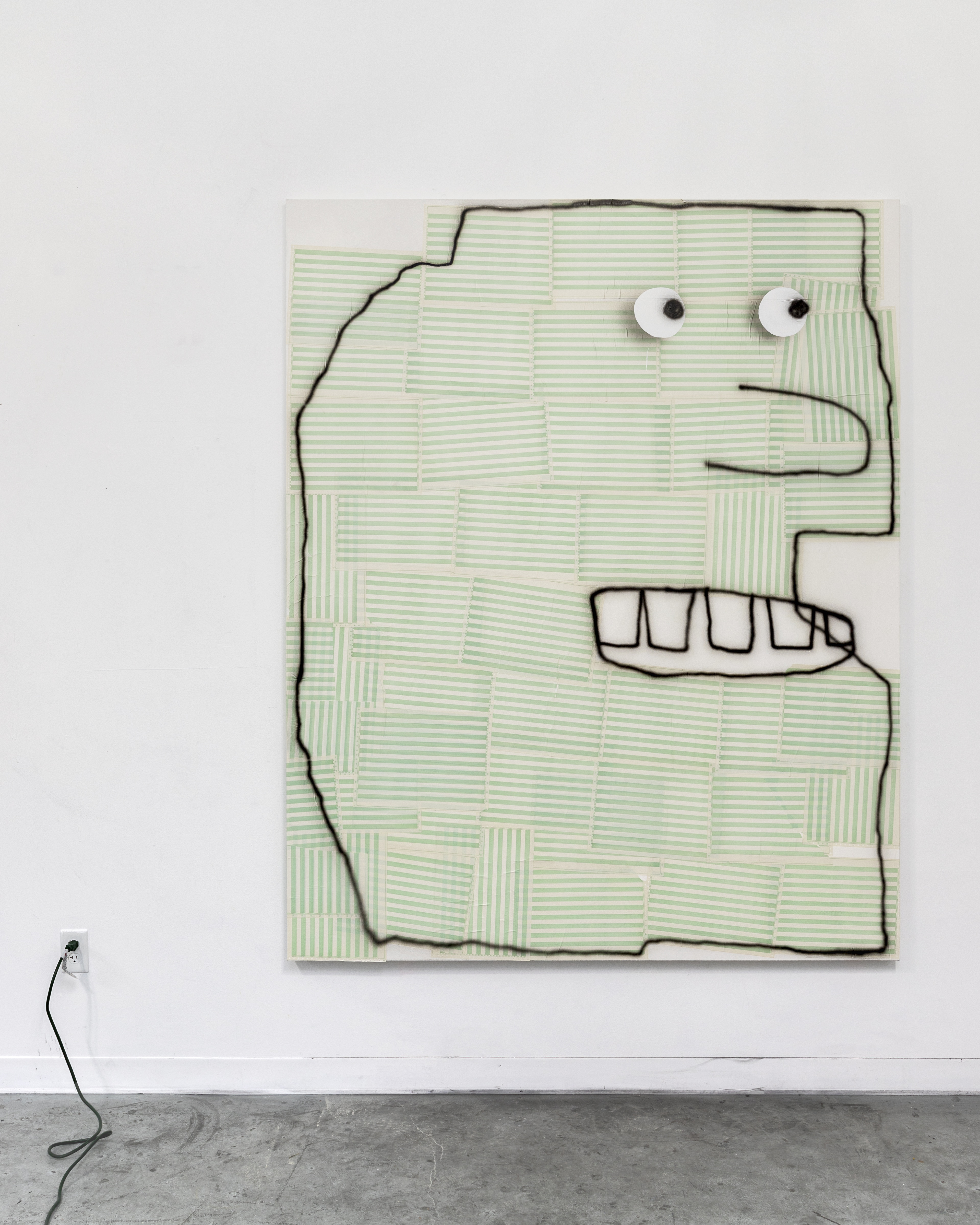
Maybe We Should be Kissing
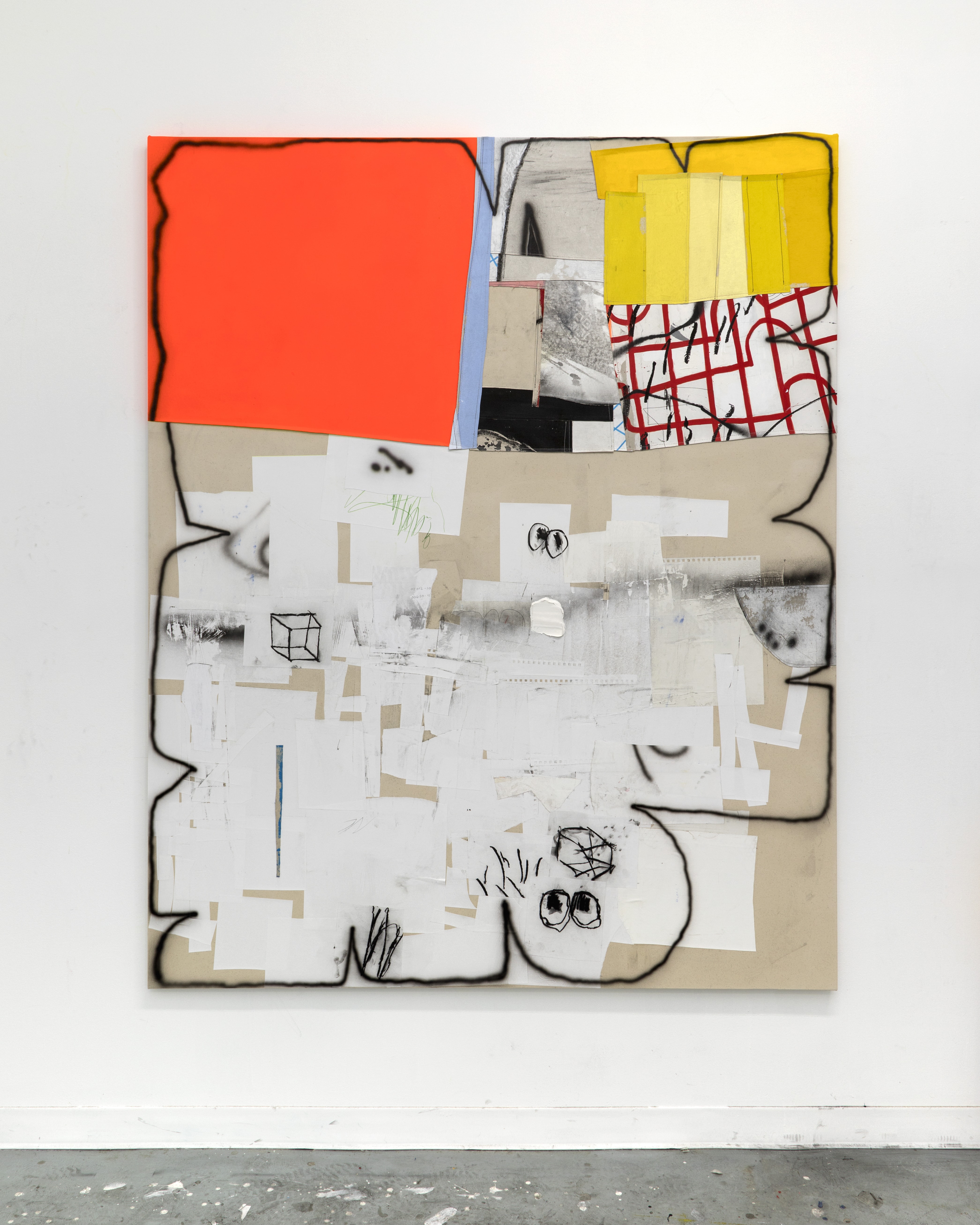
It’s Like You Don’t Even Care About Vitamins


